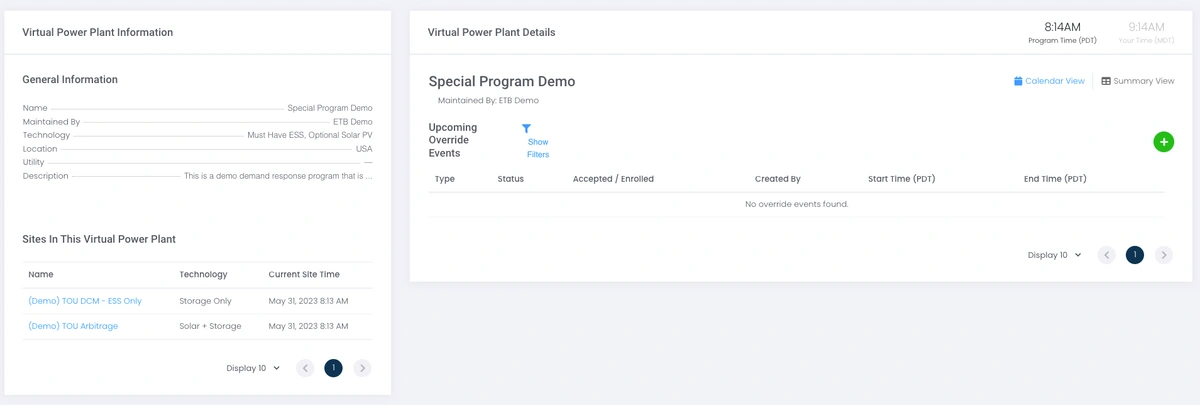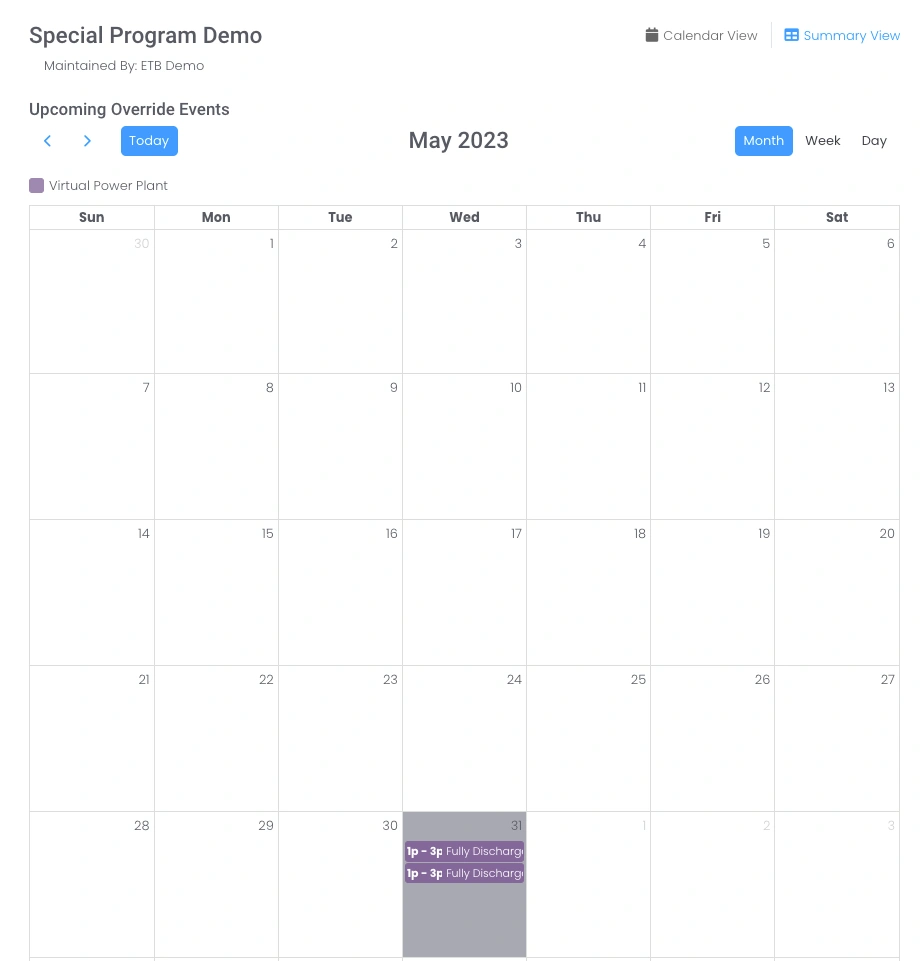What is Demand Response?
Demand response is a common term that renewable developers, and those in the renewable energy space, hear more frequently. It’s becoming a common-place value stream that energy storage systems can target, and that the industry is continuously learning more about.
Demand response (DR) means shifting or reducing power during peak periods when there is a significant strain on the grid. It is meant to strategically balance the grid out and manage the supply and demand of electricity in real-time. Demand response helps avoid potential power outages due to overconsumption, helps to stabilize the grid, and ensures that the grid remains reliable and efficient.
How Does Demand Response Work?
Demand response programs are generally implemented by the utilities themselves or in conjunction with their customers, both residential and commercial. When customers participate in demand response, they are generally incentivized by the utility to adjust their power consumption through reduced electric rates, bill credits, or direct payments.
When customers are enrolled, they are notified ahead of time by the utility to reduce demand during peak hours. The notifications are usually received within 10 minutes and 24 hours prior to the event. After the event, the utility will evaluate the demand reduction or contribution to the event and compensate accordingly. The evaluation can be done in a variety of ways including through a smart meter or through a comprehensive formula comparing historical demands to the event.
Energy storage systems play a crucial role in enabling effective demand response participation. In the case of an energy storage system with an energy management system (EMS), the EMS responds to the event by dispatching during grid peak periods. For example, Energy Toolbase’sAcumen EMS™ can preemptively charge your battery to prepare for the event, and discharge during the event for maximum demand response impact. Users can also manage these events themselves through a monitoring platform such as ETB Monitor.
Why participate in demand response programs?
If applicable to a customer, participating in demand response programs offers several benefits for the end customer and the system itself. These benefits are powerful tools developers can use when selling energy storage systems. Benefits of demand response programs include:
-
Cost Savings: energy storage systems participating in demand response programs collect incentives for the end users. Lower bills, bill credits, and cash payouts are some of the incentives earned within these programs.
-
Incentives for storage: energy storage technologies, such as batteries, can significantly affect demand response. Participating in demand response programs encourages the deployment of energy storage systems, which enhances grid flexibility, enables better utilization of renewable energy, and fosters the growth of a more resilient and efficient energy infrastructure.
-
Grid support and reliability: reducing the strain on the grid during peak demand hours helps support the grid’s reliability and prevents potential blackouts or disruptions in the power supply.
-
Environmental impacts: Shifting energy consumption away from peak hours can help reduce the need for additional power generation from fossil fuel sources. By participating in demand response, consumers contribute to a more sustainable energy system and help mitigate greenhouse gas emissions.
How to participate in Demand Response programs?
Energy Toolbase specializes in helping commercial and industrial (C&I) developers across the United States, Canada, Mexico, and beyond optimize the deployment ofenergy storage systems. We aim to help identify energy storage opportunities, determine savings, sizing requirements, hardware procurement, program enrollment, deployment, and monitoring. With our comprehensive range of products, assistance can be provided throughout the entire process, ultimately helping make informed decisions for projects.
Developers who model and install solar and energy storage systems have a few things to consider when determining if participating in demand response will add value. Our Regional Sales Managers can help find the programs that your opportunities would be eligible for. Our team can help you model the savings for the specific program that you’re eligible for in ETB Developer.
Residential customers are able to participate in the same demand response programs as commercial customers, even if they do not have any demand charges. While having an on-site load during peak periods is the most common scenario, there are a few select DR programs that allow the export of power during critical grid peak events. Traditional DR programs require that you have on-site load during the event period in order to be compensated/incentivized, however, utilities are now seeing the value in allowing exports during critical events.
Selecting the Right Hardware and Software
Understanding these program requirements is complex. Energy Toolbase can help developers through the specific program requirements and eligibility criteria, assisting with enrollment, and reviewing program details to understand terms, incentives, and what’s needed for participation.
Depending on the program, you may need to install specific equipment to enable Demand Response participation. Not all EMSs can enable a storage system to participate in a specific program. Acumen EMS has sophistication and partnerships that allow systems to participate in programs across the county. For example, Ventura Energy recently deployed a 3.7 Megawatt-hour portfolio using Acumen EMS™ controls which are enrolled and makes nominations into California’s Demand Response Auction Mechanism (DRAM) program, which is a pay-as-bid auction program that aims to bolster grid stability. Acumen provided these grid services through Leap Energy, a leading provider of energy market access for distributed energy resources. Energy Toolbase’s ongoing partnership with Leap will allow projects to participate in demand response and grid services programs, augment revenue, and aid the state’s grid through the unique revenue-share model.
Where applicable, Acumen can combine demand response with optimized dispatch based on the projects’ utility rate schedules. Once a system is enrolled, ensuring that the EMS is doing its job and that the battery is achieving optimal savings can be done through a monitoring platform. ETB Monitor provides real-time insights into the operational performance and savings of your solar + storage systems and is directly connected to your modeling and control software.
Image 1: ETB Monitor platform showing Acumen EMS™ pre-charging for an event and discharging during the event
Image 2: ETB Monitor dashboard showcasing all sites participating in DR programs and any upcoming override events that are scheduled
ETB Monitor users can manage their fleet’s participation in demand response events through our Virtual Power Plant feature within the platform. TheVirtual Power Plant feature within the platform enables demand response (DR) program participation and coordinated dispatch between sites, increasing the revenue of standalone storage and solar + storage projects in certain markets. Asset managers can enroll their sites in existing programs within the ETB Monitor platform, or have custom programs created for them. Once a site is enrolled in a program, when a program event occurs, Acumen EMS™ will dispatch to participate in the program events based on the selected dispatch mode. This feature was designed to enable ESS projects to participate in any demand response program, regardless of the program’s structure.
Image 3: Calendar view of upcoming override events in ETB Monitor
The Energy Toolbase team is here to assist developers in finding the programs that your customers are eligible for, and can also help review program details, incentives, and what is needed for participation.Schedule a call with our team to talk more about demand response programs or our Acumen EMS and ETB Monitor product offerings.






